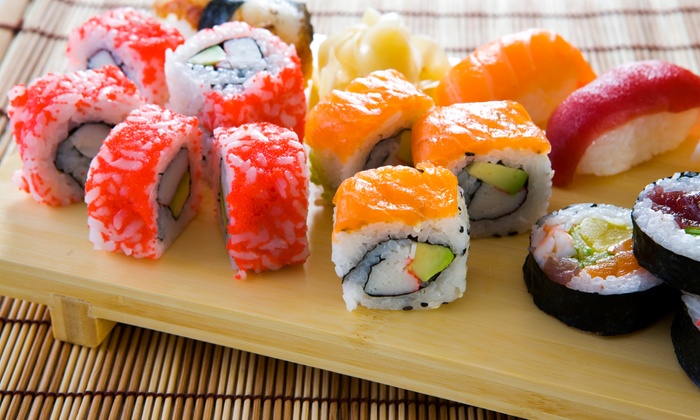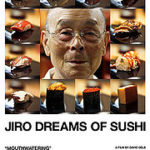Most of us are familiar with sushi, the Japanese export that has become a popular dish throughout the world. However, I doubt most of us know much about the history of sushi or that there are rules about how you should eat it.

While modern sushi is generally a high-priced item designed for refined palates, the first sushi was actually cheap street food developed out of a practical need to preserve fish.
Here are some surprising facts about sushi:
Sushi Began as Street Food
Prior to the 19th century, fish was wrapped in rice seasoned with vinegar in order to extend the shelf life of the meat. Sushi as we know it was developed when vendors began to sell bite-sized pieces of fish on top of rice (now known as nigiri) and the rice was eaten instead of being thrown out. This new invention was essentially some of the first fast food, because it could be eaten quickly, conveniently and cheaply. And, eating the rice made the sushi more filling, a bonus for the laborers who were the primary consumers of sushi at the time.

Sushi Came to America in the 1950’s but Didn’t Become Popular Until the 1980’s
While sushi made its U.S. debut in California during the 1950’s, the restaurants serving it were few and far between, and were rarely patronized by anyone other than Japanese Americans. It wasn’t until the 1970’s that sushi began to take off in the U.S. with the invention of the California Roll in Los Angeles. Then, in the late 1980’s, sushi really came into its own. With the introduction of new American twists like the Philadelphia Roll, the number of sushi restaurants in the U.S. grew steadily.
Yet sushi still wasn’t mainstream. In fact, though I have forgotten what the ad was for, I remember an amusing commercial from the 1980’s in which former NFL football player Terry Bradshaw held up a piece of sushi between two chopsticks and said, “Sushi? Looks more like bait!”. It wasn’t until the early 2000’s that sushi took a firm foothold and became a part of American food culture (and this is also when American creations like the California Roll began being served in Japan in the ultimate cultural exchange!).

Not all Raw Fish is Called Sushi
While many of us think of the term “sushi” as any dish involving raw fish, this is not technically correct. A raw fish dish is only sushi when it is served with vinegared rice. That said, there are three main types of sushi: Makizushi (known in the U.S. as maki), Nigirizushi (known in the U.S. as nigiri) and the lesser-known Chirashizushi, which is frequently eaten in Japan. Here’s the difference:
Makizushi – Served wrapped in nori (seaweed) paper, soy wrapper or omelet
Nigirizushi – Hand-pressed rice typically topped with fish, seafood or egg
Chirashizushi – Raw fish or seafood scattered on top of rice and combined with other ingredients such as vegetables; common in Japan

Remember that not all raw fish is served with rice (and is therefore not called “sushi”). Here are some other dishes you will see on a typical sushi restaurant menu:
Sashimi – Slices of meat. While sashimi is often raw fish or seafood, it can be any type of meat, such as beef
Tataki – Sashimi seared very briefly on both sides and served with a raw center

There are Rules about How You Eat Sushi and Sashimi
When most of us eat sushi, we probably don’t give it much thought. We just pop it into our mouths and enjoy its deliciousness. But if you want to be really sushi savvy, you can familiarize yourself with the following basic sushi/sashimi etiquette:
Don’t mix your wasabi and soy sauce. These condiments are used separately, if at all. Most sushi chefs prefer you enjoy the subtle flavors sans sauce.
Dip the meat side of your sushi into sauce, not the rice. This is a common boo boo. If you must dip, flip the sushi around with your fingers or chopsticks, dipping the meat into the sauce. Then place the morsel meat side down on your tongue.
Eating sushi with your fingers is totally acceptable. While sushi may sometimes seem high-brow, it is one of the few fine cuisines that can be eaten with three fingers. Sashimi on the other hand, always requires chopsticks and should not be eaten with fingers.

If those rules seem complicated, don’t worry, most people don’t even know about them (and really, unless you go to Japan or just want to be sushi-savvy), they probably don’t matter (too much) anyway.
For the Best Sushi in the World, Go to Tokyo
Not surprisingly, the place where sushi originated is also the best place for sushi today. While Japan has many famous sushi restaurants serving excellent sushi, none is more exquisite than Sukiyabashi-Jiro in Ginza, Tokyo. The owner, Jiro-san, has been making sushi for over 75 years and is a master of his craft. His fastidious ingredient selection process and pain-staking preparation techniques have made Jiro-san and his sushi famous throughout Japan (and the world).
Jiro-san’s Ginza, Tokyo restaurant (where he still hand-crafts and personally serves the sushi) has also earned three Michelin stars for its unsurpassed quality and dining experience. In fact, Jiro-san is so exceptional that he was the subject of a fascinating 2011 documentary by David Gelb (Magnolia Pictures) titled, Jiro Dreams of Sushi, and he was declared a National Treasure by the Government of Japan.
The beauty of this restaurant is that even though it is located in Ginza, the most expensive area in all of Japan, Sukiyabashi-Jiro is unassuming and the food relatively simple (though still very pricey). The dishes Jiro-san serves stand alone, with unmatched quality and flavor. So if you have the chance to try how sushi is meant to be at Sukiyabashi-Jiro, don’t miss it (but be sure to book well in advance, as the restaurant only seats 9 people and reservations fill up fast)! Another bonus: Most foreigners don’t know about it!

For those of us on more of a limited budget, some of the freshest, consistently tasty sushi can be found at a kaiten, which is a conveyor belt sushi restaurant. There are several popular chains in Japan, with two of the biggest being Genki Sushi and Ganso Zushi.
As you can see, sushi has evolved over several centuries to become the delicious dishes that we know today. There are many kinds of sushi to suit every taste, and dining experiences range from simple to exquisite. Your sushi experience is totally up to you, but the end result will be the same: A delicious meal. And that’s the beauty of the art of sushi.
For more great Japanese food articles, check out Japanalytic Food
Sources – All About Sushi Guide , Food and Wine , Magnolia Pictures , Sushi FAQ , WTOP



